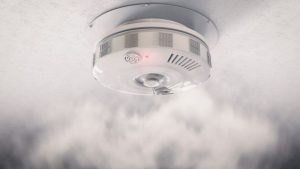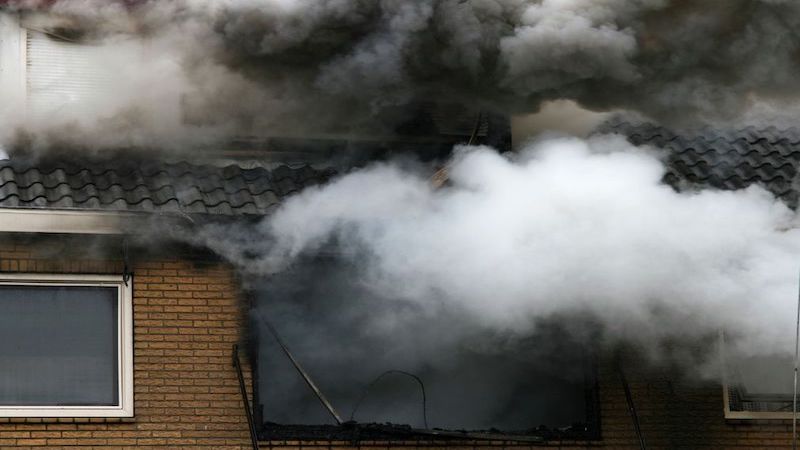Understanding How Fire Damage Restoration Works
Experiencing a fire in your home or business can be devastating, both emotionally and financially. However, understanding the fire damage restoration process can provide clarity and reassurance during a challenging time. In this comprehensive guide, we will delve into the intricacies of fire damage restoration, exploring the steps involved, the importance of prompt action, and the role of professional restoration services in restoring your property to its pre-fire condition.
Assessment and Inspection
Assessment and inspection are pivotal stages in comprehending how fire damage restoration operates. Trained restoration professionals initiate a meticulous evaluation of the property to gauge the full extent of fire damage. This process involves scrutinizing structural integrity, identifying smoke residue patterns, assessing water damage from firefighting efforts, and pinpointing potential safety hazards. By conducting a thorough inspection, restoration experts can formulate a comprehensive restoration plan tailored to the specific needs of the property. This plan serves as a roadmap for addressing the diverse challenges posed by fire damage, ensuring that no aspect of restoration is overlooked. Additionally, the assessment phase allows restoration professionals to prioritize tasks and allocate resources effectively, facilitating a streamlined and efficient restoration process. Overall, assessment and inspection lay the groundwork for successful fire damage restoration, enabling restoration teams to restore the property to its pre-fire condition with precision and expertise.
Emergency Board-Up and Tarping
Emergency board-up and tarping play vital roles in understanding how fire damage restoration works. Following a fire incident, restoration professionals swiftly implement emergency measures to secure the property and prevent further damage.
Boarding-Up
Boarding-up is a crucial step in fire damage restoration. After a fire, properties are vulnerable to external elements and intruders. Professionals secure the property by placing boards over openings to prevent access, weather damage, and vandalism. Boarding-up ensures safety and stability during restoration, minimizing further harm and expediting the recovery process. Board-up services involve strategically covering broken windows, doors, and other openings to safeguard the property from intruders, weather elements, and additional destruction.
Tarping
Tarping is crucial in fire damage restoration. After a fire, properties often have roof and opening damage, making them vulnerable to water and structural issues. Restoration professionals swiftly apply tarps to protect against the elements, mitigate damage, and expedite recovery efforts. Tarping is essential for preserving property integrity and ensuring successful restoration. Similarly, tarping is utilized to cover damaged roofs and openings, preventing water intrusion and minimizing structural damage.
These proactive measures are essential for mitigating risks and protecting the property from secondary issues such as vandalism, theft, and weather-related damage. By promptly implementing emergency board-up and tarping, restoration professionals establish a foundation of safety and stability, laying the groundwork for the subsequent phases of fire damage restoration. Additionally, these measures demonstrate a commitment to preserving the integrity of the property and minimizing the impact of the fire incident on the overall restoration process.
Water Extraction and Drying
Water extraction and drying are fundamental components of understanding how fire damage restoration works. Following a fire incident, the property often sustains water damage from firefighting efforts. Restoration professionals swiftly embark on the water extraction process to remove excess water and moisture from the affected areas. Utilizing specialized equipment such as pumps, wet vacuums, and dehumidifiers, they meticulously extract water from surfaces, flooring, and structural components. Once the water extraction phase is complete, restoration experts initiate the drying process to restore optimal humidity levels and prevent mold growth. Powerful air movers and dehumidifiers are strategically deployed to promote airflow and expedite the evaporation of moisture trapped within building materials. Throughout the drying process, restoration professionals monitor humidity levels and adjust equipment as necessary to ensure thorough drying and prevent secondary damage. By promptly addressing water damage through extraction and drying, restoration teams mitigate further structural deterioration and create optimal conditions for subsequent restoration efforts.

Understanding the Process: How Fire Damage Restoration Works
Smoke and Soot Removal
Smoke and soot removal constitute critical steps in understanding how fire damage restoration works. After a fire incident, smoke and soot residues pervade surfaces, furnishings, and structural elements throughout the property. Restoration professionals employ specialized techniques and cleaning agents to effectively eliminate smoke odors and remove soot particles. Dry cleaning methods may be utilized for light soot deposits, while wet cleaning techniques are employed for heavier residues. Thermal fogging, a process that disperses deodorizing agents in the form of a fog, helps neutralize smoke odors embedded in porous materials. Additionally, air scrubbers equipped with high-efficiency particulate air (HEPA) filters capture airborne contaminants, improving indoor air quality. Throughout the smoke and soot removal process, restoration experts exercise caution to prevent further damage to delicate surfaces and ensure thorough cleaning and deodorization. By addressing smoke and soot residues comprehensively, restoration teams restore the property to a clean and odor-free condition, facilitating the overall fire damage restoration process.
Structural Cleaning and Restoration
Structural cleaning and restoration are integral aspects of comprehending how fire damage restoration works. In the aftermath of a fire, structural elements of the property may suffer damage, including charring, warping, and discoloration. Restoration professionals meticulously assess the extent of structural damage and devise tailored strategies to address each component effectively. This may involve repairing or replacing damaged drywall, flooring, ceilings, and cabinetry to restore structural integrity and functionality. Advanced restoration techniques, such as soda blasting or dry ice cleaning, may be employed to remove soot, smoke residues, and charred materials from surfaces. Additionally, specialized treatments and sealants are applied to protect and preserve restored structural components against future damage and deterioration. Structural cleaning and restoration efforts aim to not only repair visible damage but also reinforce the stability and safety of the property, ensuring that it meets or exceeds pre-fire conditions. Through meticulous attention to detail and expertise in structural restoration techniques, restoration professionals facilitate the recovery and renewal of fire-damaged properties, enabling occupants to return to a safe and habitable environment.
Content Cleaning and Restoration
Content cleaning and restoration are essential components of understanding how fire damage restoration works. In the aftermath of a fire, personal belongings, furniture, and valuables within the property may suffer from smoke damage, soot residues, and odor penetration. Restoration professionals employ specialized techniques and equipment to assess, salvage, and restore affected contents to their pre-fire condition. This process involves meticulous inventorying, categorizing, and documenting of items to determine salvageability and prioritize restoration efforts. Items undergo thorough cleaning, deodorization, and restoration procedures tailored to their material composition and degree of damage. Techniques such as ultrasonic cleaning, ozone treatment, and content drying chambers may be utilized to effectively remove contaminants and eliminate odors. Restoration professionals work closely with property owners to ensure open communication and facilitate decision-making regarding the restoration of personal belongings. Through careful attention to detail and expertise in content restoration techniques, restoration teams aim to mitigate losses, preserve cherished possessions, and restore a sense of normalcy for property occupants following a fire incident.
Odor Removal and Deodorization
Odor removal and deodorization are pivotal aspects of understanding how fire damage restoration works. Following a fire incident, lingering smoke odors can permeate the property, compromising indoor air quality and causing discomfort for occupants. Restoration professionals employ advanced deodorization techniques to neutralize and eliminate smoke odors effectively. Thermal fogging, ozone treatment, and hydroxyl generators are among the methods utilized to target odor molecules and neutralize them at the molecular level. These techniques penetrate porous surfaces, fabrics, and structural materials, effectively eliminating embedded odors and restoring a fresh, clean environment. Additionally, air scrubbers equipped with HEPA filters help to remove airborne contaminants and improve indoor air quality. Restoration professionals conduct thorough inspections and assessments to identify odor sources and develop tailored deodorization strategies based on the unique characteristics of the property. By addressing odor concerns comprehensively, restoration teams ensure that the property is not only visually restored but also free from lingering smoke odors, providing occupants with a safe and comfortable living environment.
Final Inspection and Quality Assurance
Final inspection and quality assurance are crucial components of understanding how fire damage restoration works. After the completion of restoration efforts, restoration professionals conduct a meticulous final inspection to ensure that all aspects of the restoration process meet industry standards and exceed client expectations. During this phase, trained professionals carefully assess the property, examining structural integrity, cleanliness, and functionality to verify that all restoration work has been completed to the highest standards. Any remaining issues or concerns are addressed promptly to ensure thoroughness and client satisfaction. Documentation of the restoration process, including before-and-after photographs and detailed reports, may be provided to the client for reference and insurance purposes. Quality assurance measures are implemented to guarantee that the property is restored to its pre-fire condition, with attention to detail and precision. By prioritizing final inspection and quality assurance, restoration teams uphold their commitment to excellence and ensure that the property is safe, habitable, and aesthetically restored for occupants to return to.
Fire damage restoration is a complex and multifaceted process that requires expertise, experience, and attention to detail. By understanding the steps involved in fire damage restoration and enlisting the services of professional restoration experts, property owners can navigate the restoration journey with confidence and peace of mind. With prompt action, thorough assessment, and comprehensive restoration efforts, fire-damaged properties can be restored to their pre-fire condition, allowing occupants to rebuild and move forward after a traumatic event.

